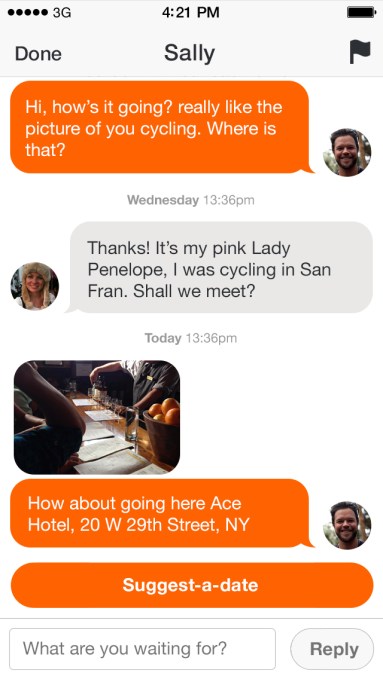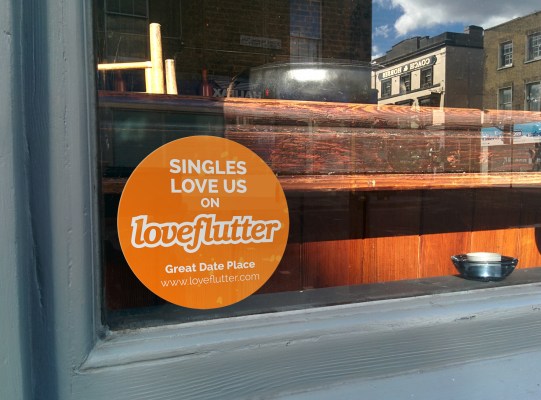Last week dating app Tinder began experimenting with ads, by tentatively wedging a video ad for Budweiser into the core swipe left, swipe right UI — a move that runs the risk of diminishing the overall user experience. Alternatively, if you want to go ‘ad-free’ you can purchase a Tinder Plus premium subscription, which, controversially, ranges in price based on your age.
Enter rival app Loveflutter, which thinks it’s come up with an alternative monetisation strategy that doesn’t take away from the core User Experience and means the startup can avoid charging for premium features as it prioritises growth over generating further revenue.
Tying into the app’s existing ‘Date Ideas’ and ‘Suggest-a-Date’ features, Loveflutter’s new ‘Promoted Places’ ad unit lets advertisers pay to have their listing appear when prospective daters are matched and want to find a place to actually meet offline.
“The idea was born from the venue-discovery functionality within Loveflutter that our users were making use of, which give personalised recommendations of places nearby, powered by Foursquare’s API. We found people are literally opening up the app just to find a great place to date nearby,” says Loveflutter co-founder Daigo Smith.
“Six months after launch we had some interesting stats, the average user was browsing 20 date ideas per week and suggesting 3 dates per week via the app. So, the unique nature of the Loveflutter user experience presented real opportunities for native location-based advertising by businesses in the local area, opening up arguably an entirely new audience of daters actively searching for a place where they’ll spend to impress i.e. affluent customers with high purchase intent.”
 That word intent is key here. Loveflutter users have to explicitly tap either the ‘Date Ideas’ or ‘Suggest-a-Date button’ before the new ‘native’ ad unit is displayed. The latter also potentially represents some ad tech innovation since it employs what the startup is calling ‘Dual Location-Based Advertising’.
That word intent is key here. Loveflutter users have to explicitly tap either the ‘Date Ideas’ or ‘Suggest-a-Date button’ before the new ‘native’ ad unit is displayed. The latter also potentially represents some ad tech innovation since it employs what the startup is calling ‘Dual Location-Based Advertising’.
This marries two users’ locations and their respective “interest graph” to serve up a single advert for a place nearby (approximately equidistant) and relevant to both parties e.g. if you’re both into jazz music, Loveflutter will serve you an ad for a nearby jazz bar.
“We think it’s a great way for businesses to get in front of daters with high disposable income and high purchase intent at a crucial point in the decision making process when they’re actively searching for great places to date nearby,” adds Smith.
That’s a monetisation strategy that unapologetically takes inspiration from Foursquare and Yelp’s ad model, and also chimes with Facebook’s recent Local Advertising drive.
On that note, I’m hearing that Loveflutter recently met with Facebook in London, who were interested in hearing about the startup’s ‘Dual Location-Based Advertising’ approach.
And while this is pure speculation on my part, it’s not hard to imagine that Facebook could one day put a ‘Meet Up’ button on your profile page or within Facebook Messenger, and when pressed it suggests ‘Nearby Places’ that are relevant to both parties’ locations and interests. Advertisers would undoubtedly embrace the idea too.
